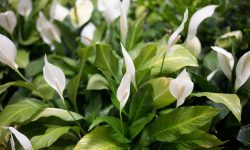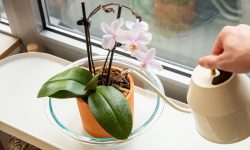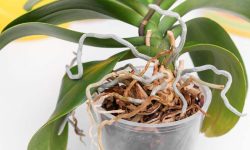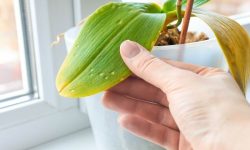Azaleas and orchids are two of the most popular flowers in the world. They are both beautiful and have a wide variety of colors. Azaleas are native to Asia, while orchids are native to South America.
Both flowers have long been cultivated by people in their respective regions.
Azaleas and orchids are two of the most popular flowers in the world. Though they share some similarities, there are also many differences between these two species. Here, we take a closer look at azaleas and orchids to help you better understand each one.
Azaleas belong to the genus Rhododendron, which contains over 800 different species. These shrubs are native to Asia, Europe, and North America. Azaleas typically have large blooms that come in a variety of colors including white, pink, purple, red, and yellow.
They prefer moist soil and partial sun to full sun exposure. Orchids belong to the family Orchidaceae, which is made up of over 25,000 different species! These beautiful flowers are native to tropical regions all around the world.
Orchids come in many colors including white, pink, purple, red, yellow, green, and even black! They generally prefer shady areas with high humidity levels. Now that you know a little more about azaleas and orchids, which one will you choose for your home garden?
What Classifies a Plant As an Orchid?
Orchids are one of the most popular and easily recognizable groups of plants in the world. With their showy, often fragrant flowers, they have been cultivated for centuries and are now found all over the globe. Though there are many different species of orchids, they can generally be classified into two main groups: epiphytic and terrestrial.
Epiphytic orchids grow on other plants or objects, using them for support but not taking nourishment from them. Terrestrial orchids, on the other hand, grow in the ground like most other plants. Both types can be found in a variety of habitats, from rainforests to deserts.
The vast majority of commercially grown orchids are epiphytes, as they are easier to cultivate than terrestrial varieties. Many epiphytic species also have specialized roots that allow them to absorb moisture and nutrients from the air around them. This makes them much less dependent on soil than terrestrial plants and means they can be grown in a wide range of potting materials, including bark chips, sphagnum moss, and even just glass beads.
The flowers of an orchid can vary greatly in size, shape, and color depending on the species. They are often very intricate in design, with three petals and three sepals (the outermost parts of a flower) that look strikingly similar to one another. The center of the flower is typically occupied by a column made up of fused male and female reproductive organs; this is what gives orchids their unique appearance.
What Type of Flower is a Azalea?
Azaleas are a type of flower that belong to the genus Rhododendron. There are over 10,000 species of azalea, which can be found in various parts of the world including Asia, Europe and North America. Azaleas are known for their beautiful flowers, which come in a wide range of colors including white, pink, purple and red.
What Does Azalea’S Look Like?
Azaleas are shrubs that can be evergreen or deciduous. They have large, showy flowers that bloom in the spring. The flowers can be white, pink, purple, or red.
Azaleas can grow to be 6 feet tall and wide.
What Family is the Azalea In?
Azaleas are a part of the heath family, which is in the Ericaceae family. This large family contains around 3350 species in 126 genera, and includes well-known plants such as blueberries, Cranberries, rhododendrons, and mountain laurels. Heaths are found all over the world, but are most common in temperate regions.
The heath family is characterized by its small flowers and evergreen leaves. Most plants in this family have acidic soil requirements and prefer full sun to partial shade. Azaleas are one of the most popular members of the heath family; they are known for their beautiful flowers that come in many colors including white, pink, purple, red, and yellow.
Azaleas can be deciduous or evergreen, and range in size from shrubs to trees. If you’re looking to add some color to your yard with low-maintenance plants, azaleas are a great option!
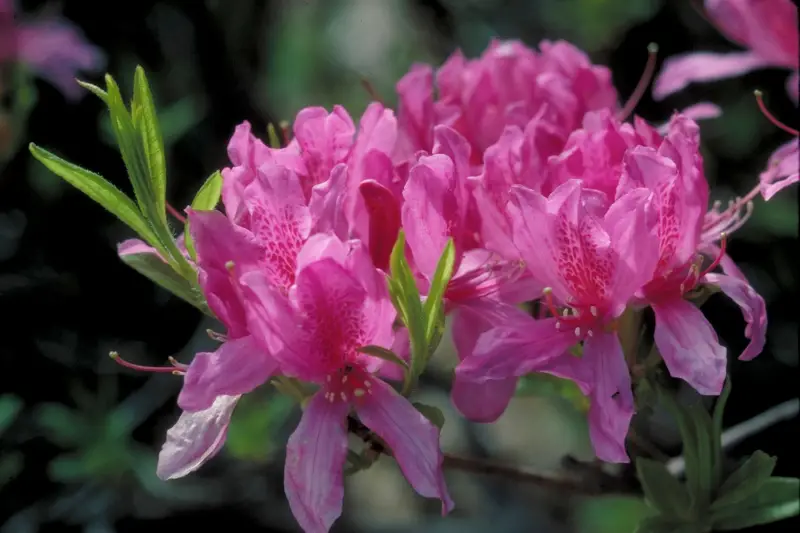
When to Plant Azaleas
Azaleas are one of the most popular shrubs in America. They are known for their beautiful flowers that bloom in the spring. Azaleas can be found in a variety of colors, including white, pink, and purple.
If you live in an area with a mild climate, you can plant azaleas any time from early fall to late winter. However, if you live in an area with a colder climate, it’s best to wait until spring to plant azaleas. This is because they need some warmth to grow well.
When planting azaleas, make sure to choose a location that has well-drained soil and full sun or partial shade. Azaleas also prefer acidic soil, so if your soil is not naturally acidic, you’ll need to add some sulfuric acid or another type of acidifier to the soil before planting. Once you’ve chosen the perfect spot for your azalea bush, dig a hole that is twice as wide as the root ball and just as deep.
Gently loosen the roots before placing the plant in the hole and backfilling with soil.
Azaleas in Pots
Azaleas are one of the most popular flowering shrubs, and they make beautiful additions to any landscape. But did you know that azaleas can also be grown in pots? Azaleas in pots make lovely patio plants or accent plants for your home’s entryway.
If you’re thinking about growing azaleas in pots, there are a few things you should keep in mind. First, choose a pot that is slightly larger than the root ball of your plant. Azaleas have shallow roots, so they need room to spread out.
Second, use a well-draining potting mix. Azaleas don’t like wet feet, so make sure your pot has drainage holes in the bottom. Third, place your pot in an area that receives partial sun to full shade.
Azaleas need some protection from the hot afternoon sun. When it comes to watering, be sure to give your azalea just enough water to keep the soil moist but not soggy. Overwatering is one of the biggest problems people have with growing azaleas in pots.
Allow the top inch or two of soil to dry out before watering again. Fertilize your azalea every other month with a balanced fertilizer formulated for acid-loving plants. With a little care, azaleas can thrive in pots for many years!
Can I Find Azalea Orchids in August?
During the month of August, many flower enthusiasts wonder if they can find Azalea orchids in august. Azalea orchids, known for their vibrant colors and delicate petals, generally bloom during the spring months. However, it is unlikely to find these specific orchids in bloom during August, considering their typical flowering season.
Orchid Lights Azalea
If you’re looking for a unique and eye-catching way to light up your garden, look no further than the Orchid Lights Azalea. This beautiful plant is native to Japan and China, and it’s known for its stunning flowers that bloom in a range of colors including pink, purple, white, and red. The Orchid Lights Azalea is a member of the Ericaceae family, which also includes rhododendrons and blueberries.
This hardy plant can reach heights of up to 10 feet, making it a great choice for privacy hedges or screens. When planting Orchid Lights Azaleas, be sure to give them plenty of room to grow as they can spread up to 6 feet wide. This plant prefers full sun to partial shade and moist, well-drained soil.
Once established, they are relatively drought tolerant. Orchid Lights Azaleas are low maintenance plants that don’t require much pruning or fertilizing. However, if you want to encourage more blooms, you can fertilize with an all-purpose fertilizer in early spring before new growth begins.
If you’re looking for a showstopping plant for your garden, the Orchid Lights Azalea is a perfect choice!
Conclusion
Azalea’s Orchids is a blog post about the different types of orchids that are available. The author discusses the pros and cons of each type of orchid, and provides information on where to purchase them.

